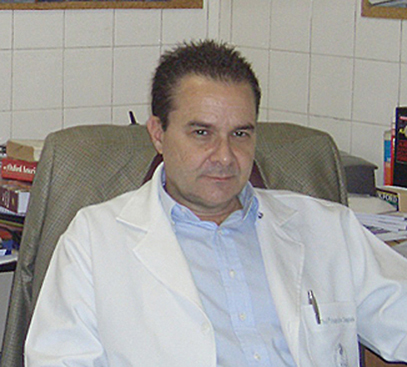 |
|
The Urogenital Research Unit is located at the Biomedical Center of the State University of Rio de Janeiro, Brazil, and under the direction of Francisco J.B. Sampaio, M.D. is dedicated to advancing the knowledge on the urogenital system, from both a basic science and a medical perspective. Research is conducted on several models, which include clinical trials and experiments on laboratory animals, and employ a wide range of methodologies. The Urogenital Research Unit staff consists of professors who, besides their research activities, are also involved in undergraduate and graduate education for Medicine and other courses in the biomedical area. The unit has its own laboratories, which specialize on such areas as anatomical techniques, experimental surgery, extracellular matrix biochemistry, histochemistry and immunohistochemistry, electron microscopy, molecular biology, etc. In addition, the unit also extends itself, via collaborative links, into other Departments in Rio de Janeiro, other Brazilian States and other Countries.
Dr. Francisco J.B. Sampaio
Full-Professor and ChairmanA hallmark of the Urogenital Research Unit, this close integration and collaboration between the experimental research work carried out in the unit’s laboratories and the clinical practice provide a stimulating and productive environment. It also creates unique opportunities for training graduate and undergraduate students, who can profit from both the expertise of the Research Unit staff and the broad diversity of scientific activities.
Comments and Historical
The Urogenital Research Unit started taking form, still incipiently, by 1983, in the then Discipline of Human Anatomy - State University of Rio de Janeiro, RJ, Brazil, when Dr. Sampaio (urologist), some scholarship holders and trainees, who shared an interest in the urogenital system, began to develop some simple research work mainly directed to urological practice.
At the time, physical and financial resources were scarce, and the work was carried on mainly due to the ingenuity and dedication of some young researchers, who basically performed macroscopic dissections, and some simple techniques of injection-dissection and injection-corrosion.
The group began to consolidate, a few scientific initiation and improvement scholarships were obtained, and some projects were approved by official research funding institutions.
During the 80’s, the work focused on three-dimensional anatomy of the intrarenal structures. Some papers on collecting system, arterial system vs. collecting system and venous system vs. collecting system were published abroad and had great repercussion, mainly by its practical application for endourology.
At the same time, it was established a research line on morphology and development of the urogenital system in fetuses. This also boosted the service, mainly on account of the great popularity of intra-uterine fetal ultrasonography, and to the lack of quantitative morphologic data on fetuses.From 1990 on, the Urogenital Research Unit already experienced relative maturity, and earned respect from the national and international scientific community. In 1993, the results of morphologic studies on adults, together with the description of the endourologic procedures and interventionist radiology, were collected in a book (Renal Anatomy Applied to Urology, Endourology and Interventional Radiology) that was published in the USA, peer-reviewed by the Thieme Verlag Publishing Company - New York. Since then, the service expanded notably and now enjoys a solid group of researches and important equipment resources. The research that was initially performed by means of simple dissection and injection-corrosion techniques, extended to research with the aid of mesoscopic dissection, microscopy with histologic techniques, histochemistry and immunohistochemistry, computerized histomorphometry, stereology, transmission and scanning electronic microscopy, biochemical analysis of extracellular matrix, cellular biology, molecular biology, etc.
The Urogenital Research Unit has been published more than hundred full-papers, and congregates numerous biomedical specialties, gathering biologists, urologists, radiologists, gynecologists, pediatricians, nutritionists, veterinarians, nurses, physiotherapists, etc. Potentially, representatives of all biomedical specialties are always welcome in our service and, certainly, this plurality has greatly contributed to the development of research on lab animals and human urogenital system. The Unit maintains a strong integration with three Postgraduation Programs, Master’s and Doctoral levels, and around 15 theses are being developed in its facilities each year.

